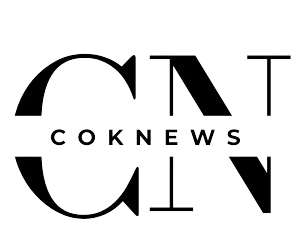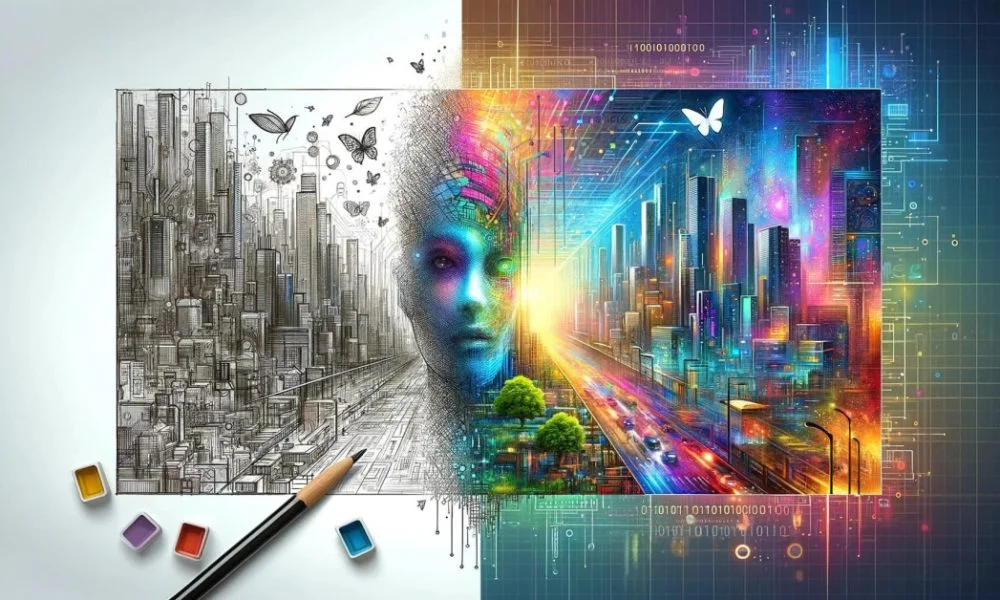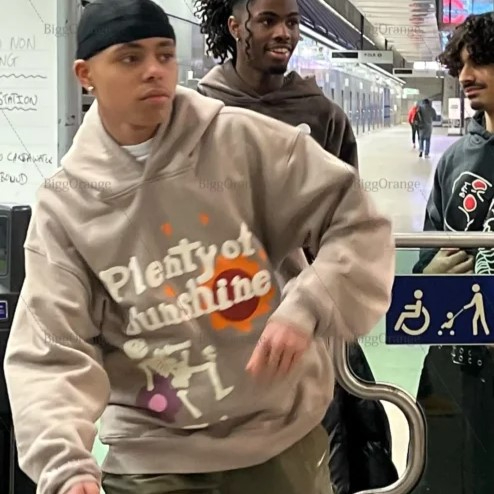What defines creativity in a world where machines can paint, compose music, and even write poetry? Is the essence of art evolving as artificial intelligence becomes a collaborator in the creative process? These questions are no longer hypothetical; they define the next chapter of artistic evolution. AI’s role in creativity isn’t about replacing human ingenuity but enhancing it, offering tools and possibilities that were once unimaginable.
Today, artists use AI to explore uncharted territories, combining human emotion with machine precision. From generating stunning digital artwork to composing symphonies that resonate with global audiences, AI is pushing the boundaries of what’s creatively possible. However, this shift also raises intriguing questions about authenticity, originality, and the very nature of artistic expression.
As we dig into this transformative era, it’s essential to understand how AI is reshaping the artistic landscape, empowering creators while challenging traditional notions of creativity. So, how is AI shaping this evolution, and what does it mean for the future of art?
Let’s explore:
How AI Is Changing The Creative Landscape
AI is no longer a passive tool for artists; it has become a collaborator, a muse, and even a creator in its own right. The blend of machine learning algorithms, neural networks, and generative models enables AI to generate music, compose poetry, design visual art, and even write scripts.
Paired with an AI-powered laptop, these capabilities are more accessible than ever, allowing creators to produce sophisticated outputs on the go. These aren’t just rudimentary outputs; they are pieces that provoke thought, evoke emotion, and push the boundaries of artistic expression.
According to NetGuru, AI is capable of analyzing vast amounts of data to identify patterns and generate new design ideas that may be beyond the scope of human designers.
- Generative Art And Neural Networks
Generative Adversarial Networks (GANs) are at the forefront of AI-driven creativity. These networks consist of two parts: a generator and a discriminator. The generator creates new images or designs, while the discriminator evaluates them, ensuring the output improves over time. This iterative process has resulted in stunning works of art that blur the line between human and machine creation.
For instance, GANs have been used to create hyper-realistic portraits, surreal landscapes, and even abstract art that challenges traditional norms. Platforms like DeepArt.io and RunwayML provide artists with easy access to these AI tools, enabling them to generate unique visuals with just a few clicks.
- AI In Music Composition
Music is another domain where AI is making waves. Tools like AIVA (Artificial Intelligence Virtual Artist) allow composers to create original scores for films, games, and advertisements.
- AI analyzes patterns in existing compositions to create harmonies and melodies.
- It generates music that resonates with human emotions.
- Artists and producers use AI software to enhance sound quality.
- AI helps refine mixes and explore unconventional compositions.
- It innovates and opens new pathways for musical creativity.
Bridging The Gap Between Humans And Machines
While AI has shown remarkable capabilities, it doesn’t replace human creativity—it augments it. Artists use AI to overcome creative blocks, explore new styles, and accelerate production. By automating repetitive tasks, such as color grading or sound mixing, AI frees up time for creators to focus on the conceptual and emotional aspects of their work.
According to Statista, the Artificial Intelligence market worldwide is projected to grow by 27.67% (2025-2030) resulting in a market volume of US$826.70bn in 2030.
- Collaborative Creativity
AI-powered tools like Adobe Sensei integrate seamlessly with creative software, offering features like automatic background removal, smart cropping, and even personalized recommendations for design elements. These capabilities empower artists to experiment and iterate faster, making creativity more accessible.
- AI And Storytelling
The art of storytelling has also been transformed by AI. Natural Language Processing (NLP) models, such as GPT, enable writers to draft, edit, and refine their narratives. AI-powered platforms like Jasper and Grammarly enhance the writing process by suggesting improvements, correcting grammar, and even generating content ideas.
For filmmakers, AI tools like ScriptBook analyze scripts to predict audience reception, helping creators refine their stories. Similarly, virtual production environments use AI to generate realistic backgrounds and simulate complex scenes, reducing costs and time.
Challenges In AI-Driven Creativity
While the potential is immense, AI in art isn’t without its challenges. Critics often question the authenticity of AI-generated art. Who owns the rights to a piece created by a machine? Does it carry the same emotional depth as a human-crafted masterpiece?
Moreover, the reliance on AI raises concerns about homogenization. If algorithms are trained on the same datasets, could this lead to a lack of diversity in artistic outputs? Addressing these challenges requires a thoughtful approach to how AI is integrated into the creative process.
The Role Of AI in Democratizing Art
AI is making art more accessible than ever. Previously, creating digital art or composing music required extensive training and expensive tools. Now, AI-powered platforms offer intuitive interfaces that allow beginners to dive in without technical expertise.
For instance, tools like Canva and Fotor utilize AI to simplify graphic design, while platforms like Soundraw enable users to generate custom music tracks in minutes. These tools level the playing field, allowing anyone with a creative spark to bring their ideas to life.
According to MarketsandMarkets, Artificial Intelligence market size is projected to grow from USD 214.6 billion in 2024 to $1,339.1 billion in 2030
Ethical Considerations In AI Art
As AI continues to influence art, ethical considerations come into play. How do we credit AI’s contribution? Should AI-generated works compete with human creations in exhibitions or competitions?
Ownership and Credit
- Determining the rightful owner of AI-generated art: the artist, the AI developer, or the machine itself.
- Establishing guidelines on how to credit AI’s contribution in collaborative works.
Authenticity and Emotional Depth
- Debating whether AI-generated art carries the same emotional resonance as human-created works.
- Addressing concerns about the perceived lack of “soul” or human intention in AI-driven creations.
Fair Competition
- Clarifying whether AI-generated art should compete alongside human-created pieces in exhibitions, contests, or markets.
- Ensuring fairness in judging artistic merit between human and machine-generated outputs.
Cultural and Creative Diversity
- Avoiding homogenization caused by AI models trained on limited or biased datasets.
- Promoting diverse datasets to reflect a wide range of cultural and artistic influences.
Ethical Use of Training Data
- Ensuring that AI systems are trained on data without infringing copyrights or intellectual property.
- Addressing the unauthorized use of artists’ work in AI training datasets.
Transparency in AI Usage
- Requiring artists to disclose the use of AI in their creative process to maintain transparency with audiences.
- Establishing labeling standards for AI-generated works in galleries or digital platforms.
Conclusion
As we stand at the crossroads of creativity and technology, it’s clear that AI is not a replacement for human artistry but a revolutionary collaborator. It opens doors to new techniques, styles, and ideas, allowing artists to push the boundaries of their imagination. While challenges like authenticity and ethical considerations persist, they also invite us to redefine our understanding of creativity and the role of the artist in this evolving landscape.
The next chapter of artistic evolution is one of collaboration—where human emotion meets machine intelligence to create something truly unique. By adapting AI’s potential while preserving the core of human expression, we can ensure that art continues to inspire, challenge, and connect us in ways that are both timeless and transformative.
The future of creativity isn’t just about what we create; it’s about how we choose to create it together.
Also Read:




